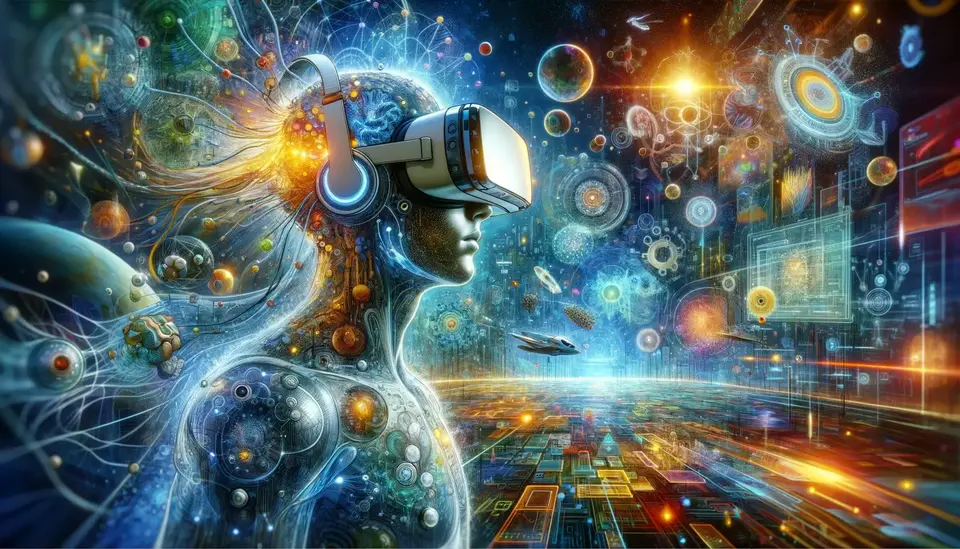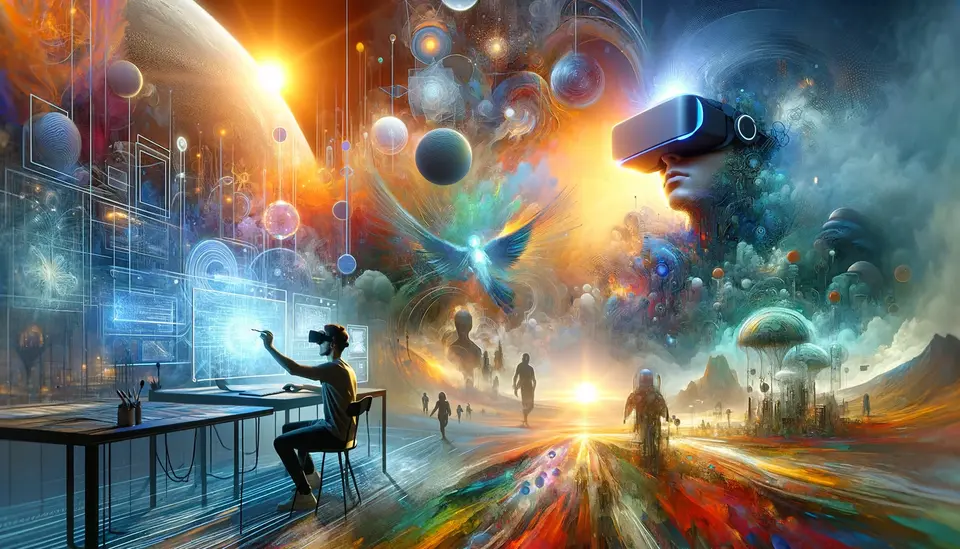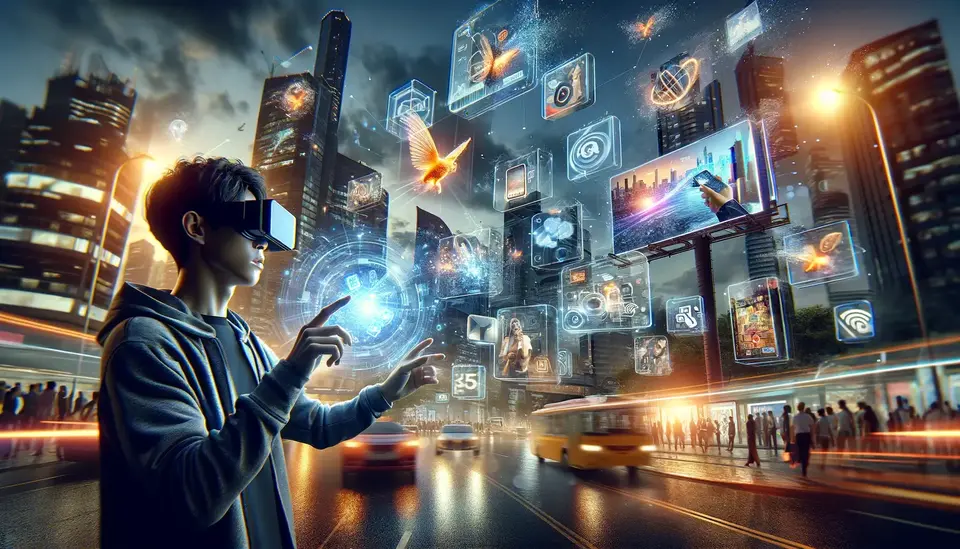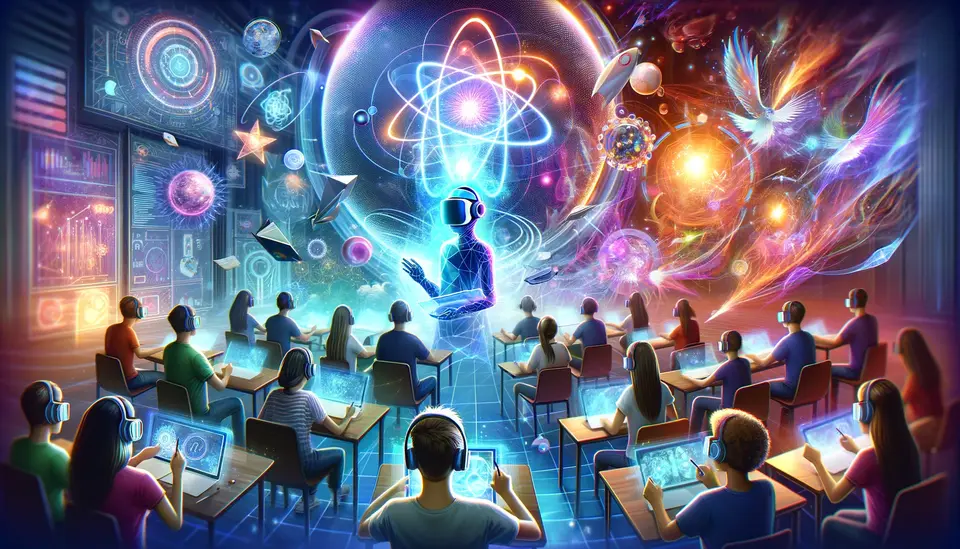The Impact of Artificial Intelligence (AI) on Virtual Reality (VR)
Posted on February 1, 2024 9 minutes 1710 words
Table of contents
Introduction
In an era where technology is rapidly reshaping our world, two groundbreaking innovations stand at the forefront: Virtual Reality (VR) and Artificial Intelligence (AI). VR immerses users in a digitally constructed environment, offering experiences that blur the lines between the virtual and the real. AI, on the other hand, brings the power of intelligent automation and learning capabilities to machines. The fusion of AI and VR is not just an amalgamation of two technologies; it’s a synergy that is unlocking unprecedented possibilities across various sectors.
This blog post delves into the intricate relationship between AI and VR. We will explore how AI’s capabilities significantly enhance VR environments, making them more interactive, realistic, and personalized. From transforming educational methodologies to revolutionizing gaming experiences, the combination of AI and VR is setting a new paradigm in technological advancements. As we navigate through this discussion, we will uncover the potential and challenges of this integration and what it means for the future.
AI and VR: A Synergistic Relationship
The collaboration between Artificial Intelligence (AI) and Virtual Reality (VR) is more than a mere combination of two technologies; it’s a synergistic relationship that elevates the capabilities of each to a new level. AI brings a layer of intelligence to VR, enabling environments that are not only immersive but also responsive and adaptive to the user’s actions and preferences.
- Enhanced Realism: AI algorithms analyze and respond to user behavior, making VR experiences increasingly lifelike. This is evident in VR simulations where AI-driven characters and environments react in real-time to user interactions, creating a dynamic experience that closely mirrors real life.
- Personalization: AI’s learning capabilities allow VR experiences to be tailored to individual preferences. Over time, AI can learn a user’s likes, dislikes, and patterns, adapting the VR environment accordingly to provide a more engaging and relevant experience.
- Accessibility and Assistance: AI in VR can also enhance accessibility, providing assistance through virtual guides and automated support, making VR more user-friendly, especially for beginners or those with disabilities.
This integration is reshaping how we perceive and interact with digital environments, pushing the boundaries of what’s possible in VR. As AI continues to advance, it brings with it a future where VR experiences become increasingly indistinguishable from reality, offering opportunities for innovation across various fields.
The Technological Backbone of AI in VR
Diving into the technical core of combining Artificial Intelligence (AI) with Virtual Reality (VR) unveils a fascinating world of algorithms, machine learning models, and data analytics, all working harmoniously to create immersive and responsive virtual environments.
- Machine Learning and Predictive Analytics: Central to this integration are machine learning algorithms that analyze vast amounts of data generated within VR systems. These algorithms can predict user behavior, improve environmental responses, and even adapt VR content in real-time to enhance user engagement and experience.
- Natural Language Processing (NLP): AI’s capability to understand and interpret human language through NLP is pivotal in VR. This allows for voice-controlled interfaces and realistic interactions with AI-driven characters within VR environments, creating a more intuitive and seamless user experience.
- Computer Vision: AI-driven computer vision is instrumental in interpreting and understanding user movements and gestures. This technology enables VR systems to provide more accurate and natural interactions, enhancing the sense of presence within the virtual world.
- Realistic Simulations: AI algorithms are used to generate realistic and dynamic environments in VR. They can simulate natural phenomena, crowd behaviors, or even complex ecosystems, offering users an incredibly lifelike experience.
By harnessing these advanced technologies, AI is not just an add-on to VR but a crucial component that propels VR systems from static, one-dimensional experiences to dynamic, multi-layered realities. This technological backbone is what makes AI in VR not just a futuristic concept, but a present-day reality with boundless potential.
Applications and Case Studies
The fusion of Artificial Intelligence (AI) and Virtual Reality (VR) is revolutionizing a multitude of sectors, showcasing a range of applications that highlight the versatility and impact of this technology.
- Healthcare: In the medical field, AI-driven VR is being used for surgical training, patient rehabilitation, and therapy. For instance, VR simulations enhanced by AI provide surgeons with realistic training environments, allowing them to practice complex procedures without any risk to patients. Additionally, AI-powered VR therapies are being used to treat conditions like PTSD, offering personalized therapeutic experiences.
- Gaming and Entertainment: The gaming industry has been at the forefront of adopting AI in VR. AI enhances game environments, character behavior, and storyline adaptability, creating more engaging and immersive gaming experiences. These games respond and evolve based on the player’s actions, making each experience unique.
- Retail and Real Estate: In retail, AI-driven VR applications are enabling customers to try products virtually, offering a new dimension to online shopping. In real estate, virtual tours powered by AI provide potential buyers with a realistic and interactive view of properties.
- Education and Training: Educational institutions are leveraging AI in VR to create interactive and personalized learning environments. These platforms can adapt to individual learning styles and pace, providing a more effective educational experience. In vocational training, VR simulations powered by AI offer a safe and controlled environment for practicing skills, from mechanical repairs to public speaking.
Key Features and Outcomes:
- Enhanced Realism and Interactivity
- Personalized User Experiences
- Improved Training and Educational Outcomes
- Increased Customer Engagement in Retail
These case studies demonstrate the transformative potential of AI in VR across different sectors, offering innovative solutions and enhanced experiences that were once considered the realm of science fiction.
Challenges and Ethical Considerations
While the integration of Artificial Intelligence (AI) and Virtual Reality (VR) brings numerous advancements, it also presents significant challenges and ethical considerations that must be addressed.
- Technical Challenges: One of the primary technical challenges is achieving seamless integration between AI and VR. This requires sophisticated algorithms, high processing power, and advanced hardware. Ensuring real-time responsiveness and preventing latency in VR environments, especially when powered by complex AI models, remains a significant hurdle.
- Data Privacy and Security: With AI-driven VR systems collecting and analyzing vast amounts of user data to enhance experience and interaction, concerns around data privacy and security are paramount. Ensuring that user data is protected and not misused is a critical challenge for developers and companies.
- User Safety and Health: Prolonged exposure to VR environments can have potential health impacts, including motion sickness, eye strain, and spatial disorientation. When combined with AI, these experiences can become more intense, necessitating the need for safety protocols and usage guidelines.
- Ethical Use of AI: The ethical use of AI in VR raises questions about user manipulation, consent, and the creation of hyper-realistic scenarios that may have psychological impacts. There’s a fine line between enhancing experiences and creating deceptive or manipulative environments.
- Digital Divide: The advanced technology required for AI-driven VR experiences can be costly, potentially widening the digital divide. Ensuring equitable access to these technologies is a challenge that needs to be addressed to avoid exclusivity.
Addressing these challenges requires a collaborative effort from technologists, ethicists, and policymakers. Establishing standards, regulations, and best practices is crucial for the responsible development and deployment of AI in VR, ensuring that these technologies benefit society while minimizing potential harms.
The Future of AI in VR
As we look toward the horizon, the future of Artificial Intelligence (AI) in Virtual Reality (VR) appears not only promising but also transformative, with potential impacts across various facets of our lives and industries.
- Advancements in Immersive Experiences: Future AI-driven VR systems are expected to offer even more immersive and hyper-realistic experiences. With advancements in AI algorithms, these systems could provide highly personalized experiences, adapting in real-time to users’ emotions, reactions, and preferences.
- Wider Industry Applications: Beyond gaming and entertainment, AI in VR is poised to revolutionize industries like healthcare, education, and manufacturing. For instance, AI-enhanced VR could provide more effective training simulations, complex medical procedures, and immersive educational experiences.
- Integration with Other Technologies: The convergence of AI in VR with other emerging technologies like the Internet of Things (IoT) and 5G is anticipated to create more interconnected and seamless experiences. This could lead to the development of new forms of interaction within both the physical and virtual worlds.
- Ethical and Responsible Development: As the technology matures, a greater emphasis on ethical and responsible development is expected. This includes more robust data privacy frameworks, ethical AI guidelines, and user-centric design approaches that prioritize safety and wellbeing.
- Democratization of Technology: Efforts are likely to be made to make AI-driven VR more accessible, reducing costs and developing more user-friendly platforms. This democratization aims to bridge the digital divide, allowing a wider range of users to benefit from these advancements.
The intersection of AI and VR is more than just a technological marvel; it’s a gateway to new realms of possibilities. As these technologies evolve, they are set to redefine our perception of reality, enhance our capabilities, and open up new avenues for innovation and exploration.
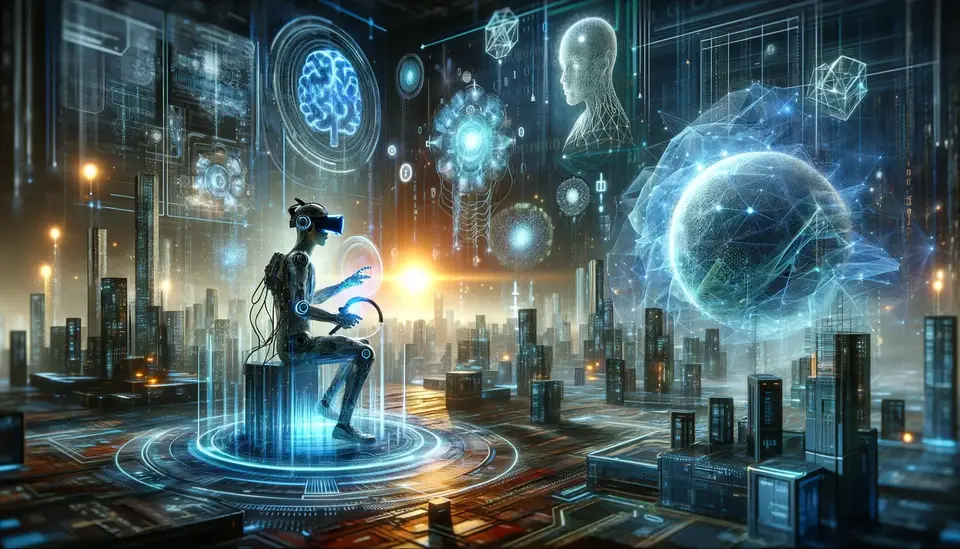
Conclusion and Key Takeaways
As we have explored in this blog post, the amalgamation of Artificial Intelligence (AI) and Virtual Reality (VR) is not just a technological advancement; it’s a paradigm shift in how we interact with digital environments and harness the power of intelligent computing.
- Synergy of AI and VR: The integration of AI with VR brings about a synergistic relationship, enhancing the realism, interactivity, and personalization of virtual experiences.
- Diverse Applications: From healthcare and education to gaming and retail, the applications of AI in VR are vast and continually expanding, showcasing the versatility and transformative potential of these technologies.
- Technical and Ethical Challenges: While the potential is immense, we must also acknowledge and address the technical challenges and ethical considerations, including data privacy, user safety, and equitable access.
- Looking to the Future: The future of AI in VR promises even more groundbreaking advancements, with the potential to revolutionize various industries and impact our daily lives.
As enthusiasts, professionals, or simply curious minds, it’s an exciting time to be part of this technological evolution. The journey of AI in VR is just beginning, and its full potential is yet to be realized. By staying informed, engaged, and responsible, we can all be part of shaping a future where AI-enhanced VR experiences are not only awe-inspiring but also beneficial and accessible to all.

